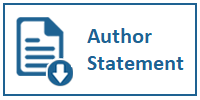Rancang Bangun Sistem Peminjaman Laptop dengan Metode Extreme Programming Menggunakan Framework Bootstrap
Case Study at PT Gramedia
DOI:
https://doi.org/10.31937/si.v12i1.2087Abstract
PT Gramedia is a company engaged in the printing industry. Currently, PT Gramedia provides facilities for a number of laptops that can be lent to employees to support their work needs. During the current COVID-19 pandemic, PT Gramedia requires some of its employees to work from home. This results in the increasing need for employees to work devices in the form of laptops. The research conducted aims to design and build a web-based laptop lending information system using the Bootstrap 4 framework, which is intended to help make the data collection and administration process faster, easier and more efficient in terms of time, cost, place and energy. From the results of the research, a system was built according to user needs and was able to solve existing problems. In addition, the resulting system is also more flexible and dynamic and can be accessed from a variety of different types of devices.
Index Terms”Bootstrap; extreme programming; information system; laptop rental
Downloads
Downloads
Published
How to Cite
Issue
Section
License
Authors retain copyright and grant the journal right of first publication with the work simultaneously licensed under a Creative Commons Attribution-ShareAlike International License (CC-BY-SA 4.0) that allows others to share the work with an acknowledgement of the work's authorship and initial publication in this journal.
Authors are able to enter into separate, additional contractual arrangements for the non-exclusive distribution of the journal's published version of the work (e.g., post it to an institutional repository or publish it in a book), with an acknowledgement of its initial publication in this journal.
Copyright without Restrictions
The journal allows the author(s) to hold the copyright without restrictions and will retain publishing rights without restrictions.
The submitted papers are assumed to contain no proprietary material unprotected by patent or patent application; responsibility for technical content and for protection of proprietary material rests solely with the author(s) and their organizations and is not the responsibility of the ULTIMA InfoSys or its Editorial Staff. The main (first/corresponding) author is responsible for ensuring that the article has been seen and approved by all the other authors. It is the responsibility of the author to obtain all necessary copyright release permissions for the use of any copyrighted materials in the manuscript prior to the submission.















